Keanu Reeves crosses paths with new foes as well as some familiar faces in John Wick: Chapter 4, the latest installment in a franchise that has redefined the action genre. This time around, Wick’s desperate attempt to clear his name from a High Table contract sends him to far-off encounters in Jordan, Osaka, Berlin, and Paris.
Ian McShane and Laurence Fishburne return alongside Reeves, who is joined by franchise newcomers such as Donnie Yen, one of cinema’s great martial artists; Japanese veteran Hiroyuki Sanada; pop star Rina Sawayama; and cult favorite Scott Adkins as the villain, Killa.
John Wick: Chapter 4 is so epic that Director Chad Stahelski needed five stunt teams to choreograph the film’s 14 action sequences. One fight set in a Berlin nightclub required 35 stunt performers and over 200 background extras. Another in an Osaka hotel took a month to film.
Stunt Coordinator Stephen Dunlevy worked on the project from the start. He’s been a stunt performer and coordinator on titles such as Mad Max: Fury Road and The Matrix Resurrections, as well as hit comic book movies from both DC and Marvel. Currently, he is the Supervising Stunt Coordinator on the John Wick spinoff Ballerina starring Ana de Armas.
Below the Line recently hopped on Zoom to speak with Stephen Dunlevy, who talked about working with Keanu Reeves, the pressure to top what the John Wick movies have done in the past, and what sets the franchise apart from other action movies.
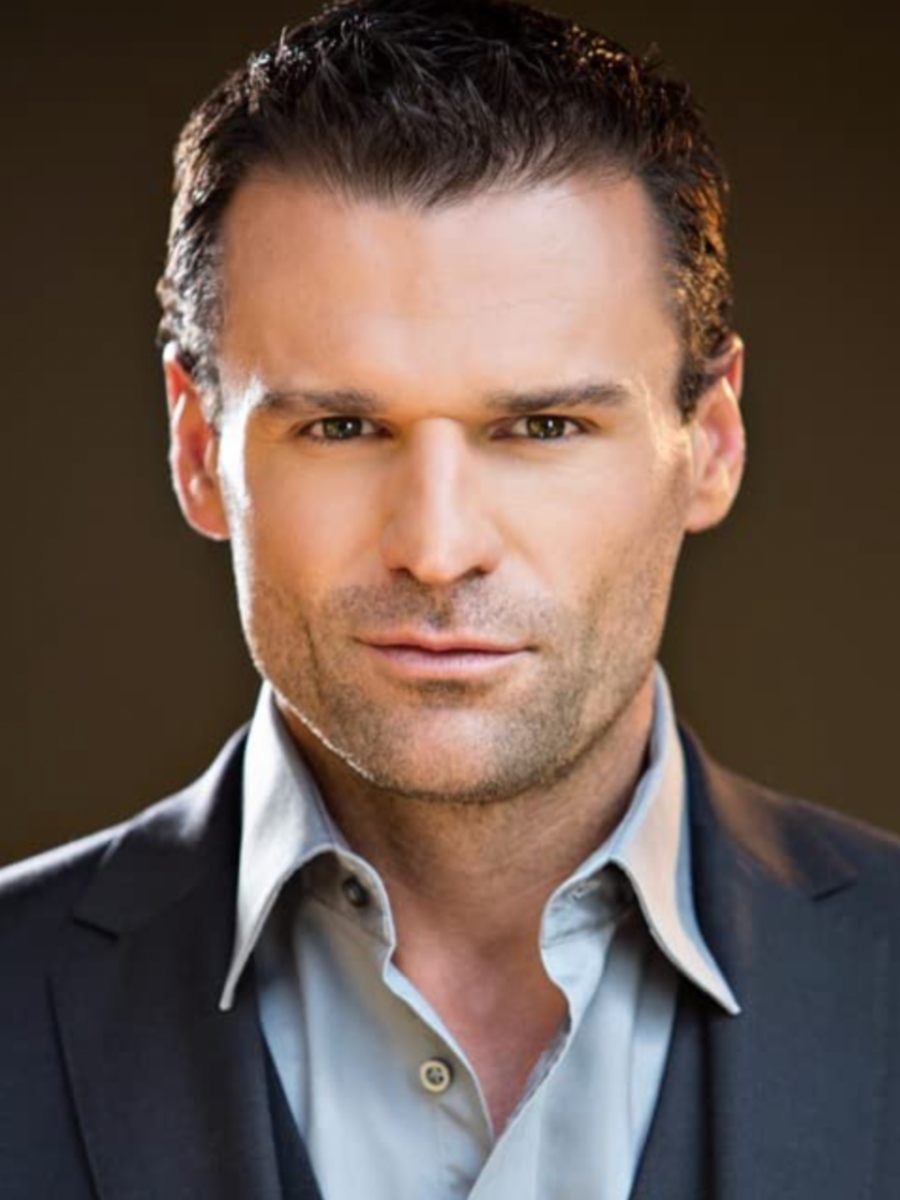
Below the Line: You’ve worked on all four John Wick movies. What do you think sets them apart from other action movies?
Stephen Dunlevy: The wonderful thing about these is that we have time. The studio, the producers, and Chad all understand that we need time with the actors. That’s not something you always get on a film. You might only get a few days before the shoot, so that’s where you end up using a double. That’s when the fights become super cutty [and] you’re coming in close on shaky cameras and tight lenses — things like that.
Obviously, that’s not what John Wick is. We’re doing long takes and wide lenses with the actors. Keanu always talks about doing the action and not the stunts. What would be a stunt for another actor is [just] action for Keanu. He is trained up and has the discipline to do a lot of the action himself. If John Wick hits the ground, we’ll go to a double.
Keanu’s level of discipline and training means that all the actors coming onto the show know what to expect. With someone like Donnie Yen or Hiroyuki Sanada, amazing martial artists in their own worlds, we base their stunts on their abilities and styles. There’s no point in trying to reinvent the wheel with them.
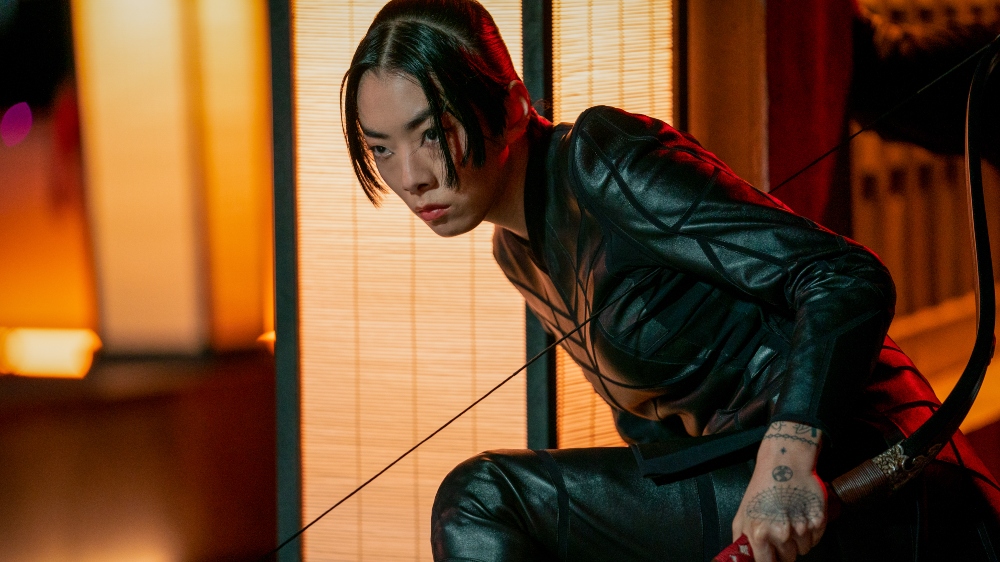
BTL: How do you make sure someone like Rina Sawayama, who hasn’t had a lot of martial arts experience, can exist in the same world as Yen or Sanada?
Dunlevy: It’s difficult. It’s always a challenge, but one of the great things about working with Chad is that he’s always challenging you to be a better coordinator. Rina is 5’8″ and petite — a dancer and a singer. You’re not going to have her square up against someone who’s 6’3″. If she gets hit by someone that size, she’s going down.
So it’s important to develop action based around their style to make it as realistic as possible. Her character uses a bow-and-arrow because weapons aren’t allowed in the Osaka Continental. A bow-and-arrow works long distance. When you’re in close, the bow becomes a weapon in itself. You use it to trap people, throw people. The great thing about Rina is that with her dancing background, she is very flexible. She has the body control to pick up choreography very quickly.
BTL: What’s it like working with Keanu?
Dunlevy: We don’t necessarily teach him a particular fight choreography for something. We teach him modules — modules that we can grab from here and put over there. You may have come up with this great symphony of action, but on the day you’re shooting, you realize a beat’s not working, [so] you say, “Hey, let’s move this around, and let’s change that, and let’s see how this works.” You watch it play out and think the new timing works a lot better, but that means another piece now needs to be further up the stairs. With built-in modules, you can interact and change things around a lot easier.
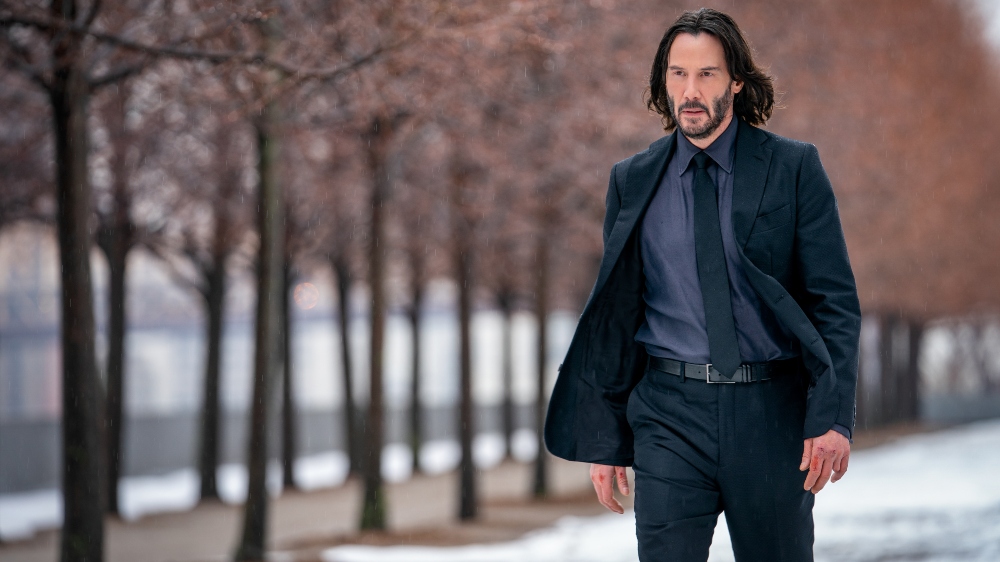
BTL: Do you have to persuade Keanu when making those kinds of changes?
Dunlevy: No, Keanu is very collaborative. He will rightly question something if he thinks it’s not part of his character. But if you say to him, “This doesn’t work here, we’re going to move it over there because X, Y, and Z” — most of the time he’s very receptive. He’ll see that it makes more sense and come back with his own ideas.
Donnie Yen was the same way. He changed his Caine character considerably from what the original script was. His interpretation of the character was much more interesting.
BTL: Does that collaborative spirit extend to the heads of department?
Dunlevy: It has to. This was a giant collaborative effort. Take DP Dan Laustsen. He can’t light in a void, he wants to make it great for the action. Kevin Kavanaugh, our Production Designer, was fantastic. I never heard the word “no” come out of his mouth, even when we were changing things on the day of the shoot.
He did that incredible set in Berlin. It’s some five stories tall, and with a waterfall that needed a giant catch tank underneath the set and hoses to circle the water back up. He needed to come up with a surface that was good for fighting, could take an impact, but also allowed water to flow through.
That meant our Costume Designer, Paco Delgado, had to figure out how the suits would fit when they got wet and how the shoes would grip. He got me 12 different types of soles we experimented with to make sure they wouldn’t slip.
Jonathan Rothbart, our Visual Effects Supervisor, was key during the fights. When we’re cutting and stabbing people, those weapons need to be shortened physically. The visual effects team then extends them later. They also added effects for the “Dragon’s Breath” shotgun that spews out a phosphorus magnesium flame.
When we’re hitting people with guns, they’re rubber. Guns that fire were what we call “plug guns.” The barrel is completely plugged, nothing can come out of it. The cartridge has a low level of gunpowder, just enough to cycle on a semi-automatic weapon. So you see the slide move back and forth [and] you see the shell rejection. You also get a noise and [a] recoil that actors can react to. Our Weapons Master was Robert “Rock” Galotti.
At the end of the day, it comes down to Chad. He writes a lot of the action as he’s developing the script. Chad was a drummer and musician, so he really understands the rhythm of the fights. The way a scene progresses and builds, knowing how to change the rhythm to keep the audience engaged, knowing how to keep the fighters engaged, knowing how to maintain the tone — that’s all Chad. He’s probably the greatest choreographer of our generation.
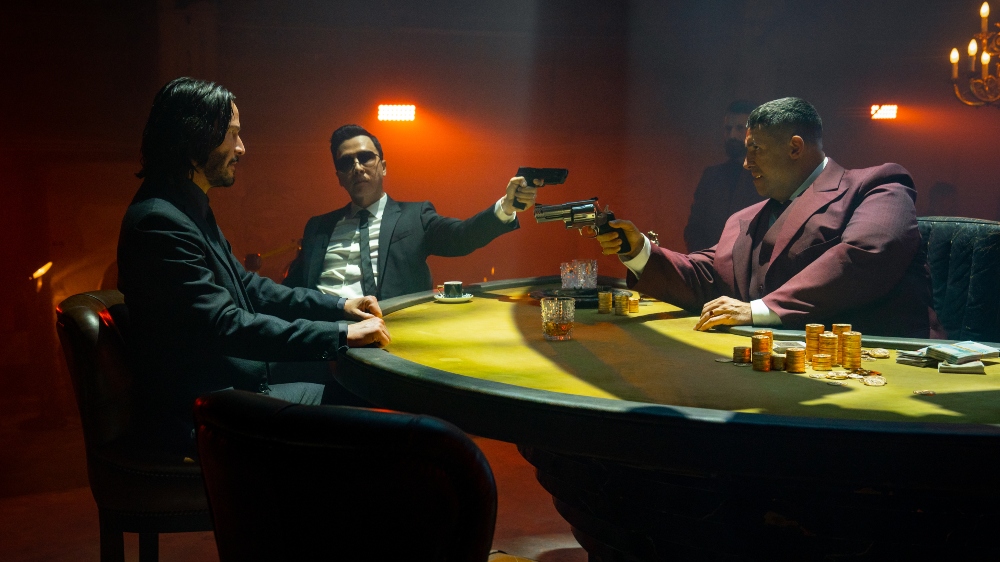
BTL: He may want it a certain way, but you’re the guys who have to help execute it. How did that come into play during that incredible fight in an abandoned house in Paris?
Dunlevy: Chad wanted to incorporate the “top shot,” where you see the action from above, to reference video games. These movies are basically about interesting ways John Wick can kill people. He’s got a “Dragon’s Breath” shotgun, [so] what is the best way to show that? If you’re in a traditional side shot, you lose some of the impact. But if you’re shooting from above, you get to see this amazing cause and effect. Usually, with John Wick, you’re seeing him react to someone at the same time he is being attacked. But with the top shot, we see people approaching him beforehand. We know what’s potentially going to happen. How will he get out of the situation?
BTL: With all those moving parts, it must have been incredibly complicated to choreograph.
Dunlevy: Scott Rogers, our Second Unit Director and Stunt Coordinator, oversaw a lot of that sequence. While we were shooting the Osaka fights, Laurent Demianoff, our French Stunt Coordinator, brought a team out from France to work on the top shot sequence. We had the Japanese team stay on with them.
It was all on a computerized winch system. You work out where everyone is going to go, then the winch is programmed where to move to meet them. It’s literally me saying, “1, 2, 3, 4…” so everyone knew where to be. I think we went up to 200 in total. For example, on beat 10, there are people on one side of a wall and John Wick on the other. Everybody knows exactly where they need to be on camera and exactly what they need to be doing. It was a choreographed ballet.
We rehearsed for about a week and a half. If memory serves me, we shot for three nights. We would do multiple passes when we rehearsed it with Keanu. We could adjust parts if it was needed but everything was pretty much locked in because of the camera movements. If we wanted to change something it would take half an hour to reprogram the head for the winches.
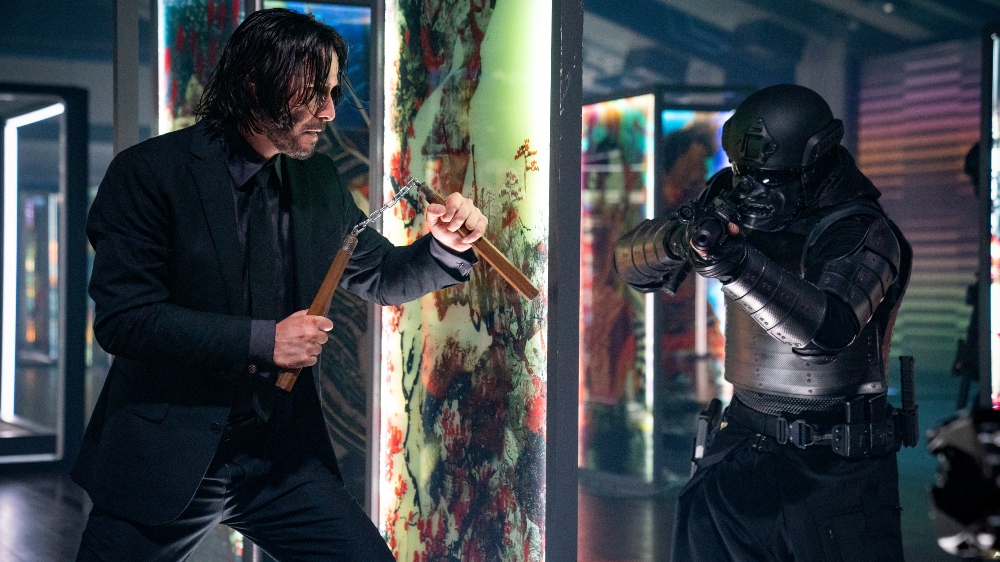
BTL: Wick has to climb 222 steps in Paris, which must have been even more difficult to design because you’re on a limited set, and there are only so many ways you can fall down stairs.
Dunlevy: That is true. I don’t know if you’ve been to the steps but if you get the chance, go. We had the benefit of banisters, and on each side of the stairs, there are cobblestones. Our amazing DP Dan Laustsen shot it all at night. He used a wet down, which made the stairs glow. But it’s at night in France, so it would start to get cold. Jeremy Marinas, our Fight Coordinator, and his team were just fantastic in that sequence.
BTL: I know you’re working on Ballerina, a John Wick spinoff starring Ana de Armas. I’m guessing that can’t be taking place on the same scale as Chapter 4.
Dunlevy: If you look at the first John Wick, there was no action until about 30-35 minutes in. Instead, Chad was developing John’s character. How organized [how] he was making coffee, for example. Ballerina takes place in the same universe, but we’re starting to develop a character. I wouldn’t call it an origin story, but a way for audiences to discover this character.
BTL: Finally, what was it like working with George Miller on Mad Max: Fury Road?
Dunlevy: It was one of the greatest experiences [of] my life. Sitting in on development meetings was like taking a master class with George Miller. The detail that he went into in building that world was unbelievable, and you can’t really see it sometimes. For instance, each of those weapons was made out of scavenged car parts. Everything in that world was made out of parts.
In terms of stunts, George wanted everything to be practical. If you couldn’t use a person, use a dummy. Being able to work out how to do things practically in creative ways was so formative for my early years.
John Wick: Chapter 4 opens in theaters nationwide on Friday, March 24, courtesy of Lionsgate.





